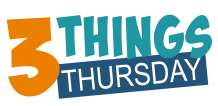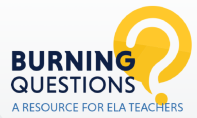 THIS IS A PART OF THE BURNING QUESTIONS BLOG SERIES. AT THE END OF EACH POST, YOU WILL FIND RESOURCE LINKS AND A LINK TO A ONE-PAGE PDF WITH THE INFORMATION IN THE BLOG — INCLUDING RESOURCES.
THIS IS A PART OF THE BURNING QUESTIONS BLOG SERIES. AT THE END OF EACH POST, YOU WILL FIND RESOURCE LINKS AND A LINK TO A ONE-PAGE PDF WITH THE INFORMATION IN THE BLOG — INCLUDING RESOURCES.
A few years ago, I planned this really great lesson. I modeled how to analyze a text by doing a read aloud/think aloud with Kate Chopin’s Désirée’s Baby. I don’t want to brag, but it was an awesome lesson. The students were rapt, they loved the story, and they wrote down everything as I marked up the text under the document camera.
It was a series of beautiful moments, until I asked students to repeat the process in another one of Kate Chopin’s short stories.
Many set there confused. Most annotated very surface observations about the text. I left that day confused.
What happened?
Well, many things happened (or didn’t happen), but one thing for sure, I hadn’t really understood the power in mentor texts and how to harness that power. I was just showing off how much I knew in a high-interest text rather than really teaching anything transferable for my students.
Ralph Fletcher describes mentor texts as:
“Mentor texts are any texts that you can learn from, and every writer, no matter how skilled you are or how beginning you are, encounters and reads something that can lift and inform and infuse their own writing. I’d say anything that you can learn from – not by talking about but just looking at the actual writing itself, being used in really skillful, powerful way.”
And as Lester Laminack and Reba Wadsworth so beautifully wrote in their book Writers ARE Readers:
“Leading the student to understand what he did as a reader can become a lens that brings into focus what the writer had to do before a reader ever saw the page.”
What we teach in writing can be flipped to teach in reading.
While I had a great short story, it wasn’t really a mentor texts because I didn’t teach any skills. I didn’t select purposeful moments in the text to model the SKILL work. I didn’t show the STEPS so the students could replicate the skill in their own reading or writing.
There’s tons of great resources out there about using mentors. And that’s because of how incredibly powerful mentors are. Once I actually figured out that mentor texts weren’t a platform to show all I knew about a text but rather a platform to show students a way to lift their level of reading and writing craft by noticing and imitating skills, my lessons became more accessible and transferable.
The students felt empowered not intimidated.
Mentor texts can be found almost anywhere from published high-interest texts to student work to your mail. Mentor texts can be used to teach everything from reading skills to writing skills to grammar. Mentor texts can be used as an anchor texts in the lesson to text set for students to use on their own work to tools to be used during conferring.
Just remember to be intentional, focused, explicit, and purposeful.
RESOURCES
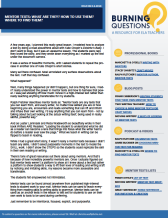
PROFESSIONAL TEXTS:
- MARCHETTI & O’DELL’S WRITNG WITH MENTORS
- STACEY SHUBITZ’S CRAFT MOVES
- RALPH FLETCHER’S MENTOR AUTHOR, MENTOR TEXTS
PODCAST & VIDEOS:
- RALPH FLETCHER ON MENTOR TEXTS
- AIMEE BUCKNER ON CHOOSING MENTOR TEXT FOR READING
- MARCHETTI & O’DELL ON WHERE TO FIND MENTOR TEXTS
BLOGS:
- FRANKI SIBBERSON’S HELPING STUDENTS FIND THEIR OWN MENTOR TEXTS
- TWO WRITING TEACHERS’ HOW TO CHOOSE & MINE MENTOR TEXTS FOR CRAFT MOVES: TEACHING WRITING WITH MENTOR TEXTS
- MOVING WRITERS’ 4 WAYS OF LOOKING AT MENTOR TEXTS
MENTOR TEXTS LIST:
- PENNY KITTLE’S LIST OF TEXT
- MOVING WRITERS’ MENTOR TEXT DROPBOX
- GREAT SENTENCES’ NOBLE SENTENCES … FOR IMITATION & CREATION
FOLLOW #MENTORTEXT & #MENTORTEXTS ON TWITTER & INSTAGRAM FOR MORE IDEAS!

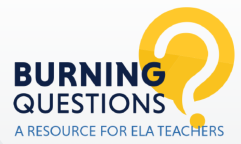 THIS IS A PART OF THE BURNING QUESTIONS BLOG SERIES. AT THE END OF EACH POST, YOU WILL FIND RESOURCE LINKS AND A LINK TO A ONE-PAGE PDF WITH THE INFORMATION IN THE BLOG — INCLUDING RESOURCES.
THIS IS A PART OF THE BURNING QUESTIONS BLOG SERIES. AT THE END OF EACH POST, YOU WILL FIND RESOURCE LINKS AND A LINK TO A ONE-PAGE PDF WITH THE INFORMATION IN THE BLOG — INCLUDING RESOURCES.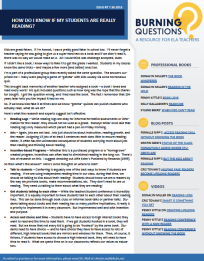
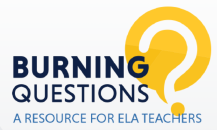
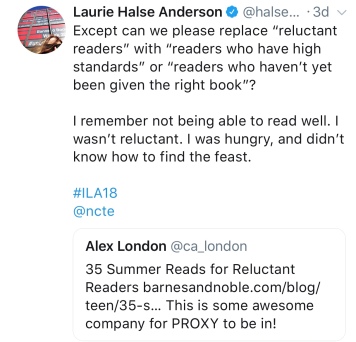
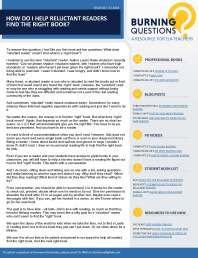
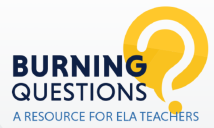 This is a part of the Burning Questions blog series. At the end of each post, you will find resource links and a link to a one-page PDF with the information in the blog — including resources.
This is a part of the Burning Questions blog series. At the end of each post, you will find resource links and a link to a one-page PDF with the information in the blog — including resources. 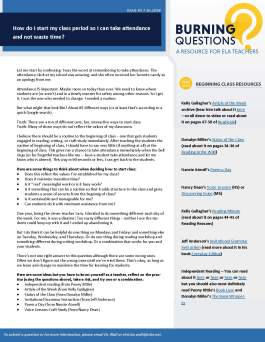
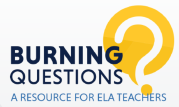 This is a part of the Burning Questions blog series. At the end of each post, you will find resource links and a link to a one-page PDF with the information in the blog — including resources.
This is a part of the Burning Questions blog series. At the end of each post, you will find resource links and a link to a one-page PDF with the information in the blog — including resources. 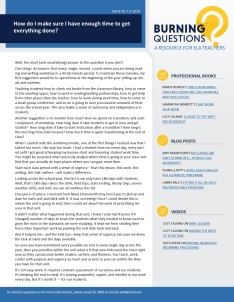
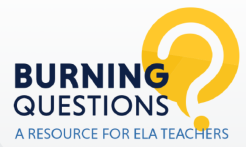 I haven’t posted in … well, it’s been a minute. One of my goals is write again here. I asked some colleagues what they thought were 6-12 grade ELA teachers “burning questions.” And let me just say, I have the BEST colleagues. They were so thoughtful in their responses — which helped me launch this new series for my blog.
I haven’t posted in … well, it’s been a minute. One of my goals is write again here. I asked some colleagues what they thought were 6-12 grade ELA teachers “burning questions.” And let me just say, I have the BEST colleagues. They were so thoughtful in their responses — which helped me launch this new series for my blog. 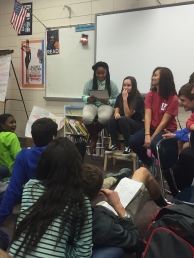 It wasn’t childish at all. Most of my students loved it! It built a sense of community in a way that really can only be accomplished through this closeness of learning together.
It wasn’t childish at all. Most of my students loved it! It built a sense of community in a way that really can only be accomplished through this closeness of learning together.
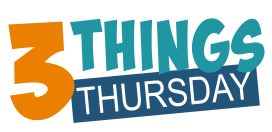
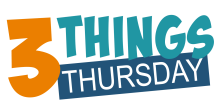 Here are three things I read this week that moved me, challenged me, and encouraged me. I hope they do the same for you.
Here are three things I read this week that moved me, challenged me, and encouraged me. I hope they do the same for you.